Are you eager to master the basic invert pole move in pole dancing? The invert is a fundamental technique that forms the foundation of many advanced tricks in pole dance fitness. However, executing this move with strength, control, and proper form is crucial for both safety and skill progression.
In this guide, we’ll explore essential techniques, strength requirements, and training exercises to help you perfect your basic invert pole move. Whether you’re a beginner or refining your skills, these step-by-step strategies will set you on the path to success.
The Importance of Strength for the Basic Invert Pole Move
Why Strength Matters for the Basic Invert Pole
To perform a basic invert pole successfully, you need strength in three key areas:
- Hands and grip strength – Essential for maintaining control on the pole.
- Back and shoulders – Supports the body while transitioning into an inverted position.
- Core muscles – Helps lift the lower body smoothly without relying on momentum.
Proper muscle engagement ensures that the movement is executed with control and fluidity, reducing the risk of injury.
The arms and back muscles must be strong enough to hold the weight of your body in the air, and the abdominals must be strong enough to lift the body’s lower part and bring it up.
Then, the move should be done smoothly and controlled to avoid any possible injuries to the back muscles.
The first school where I trained, in Singapore, the beginners were not allowed to try to invert in the first 4 months unless they were involved in some other sports which meant that they already had the necessary power. This is what many champions, with whom I had the good fortune to have lessons with, recommend.
Often, I have noticed the following being done: The students’ kickstart is rather strong and they reach the pole with the tip of their foot and they depend on that to pull up the rest of the body and the other leg. This means that their abs are not strong enough and so they rely on the kickstart and on their leg to stand high.
Proper Technique for the Basic Invert Pole Move
Step-by-Step Guide to Executing the Basic Invert Pole
1. To stand next to the pole with the exterior hand holding the pole at the height of the face.
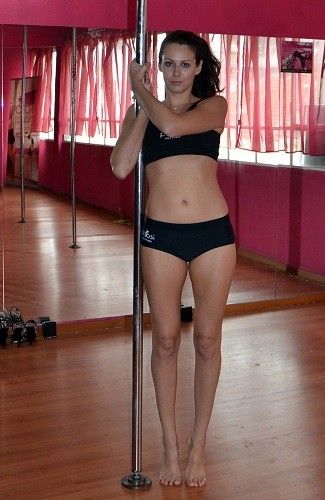
2. With the power of the abdominals, raise your knees as close to the chest as you can.
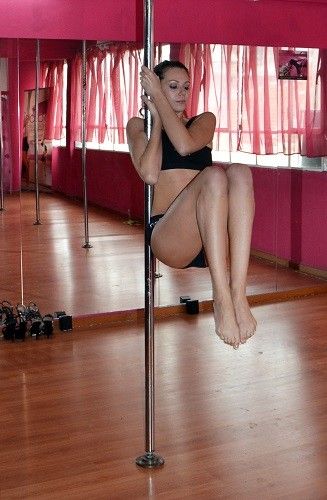
3. Lean your body backwards, turn your hips toward the ceiling and let the head backwards.
4. From this position, you can do the basic invert (inverted crucifix) or inverted V.
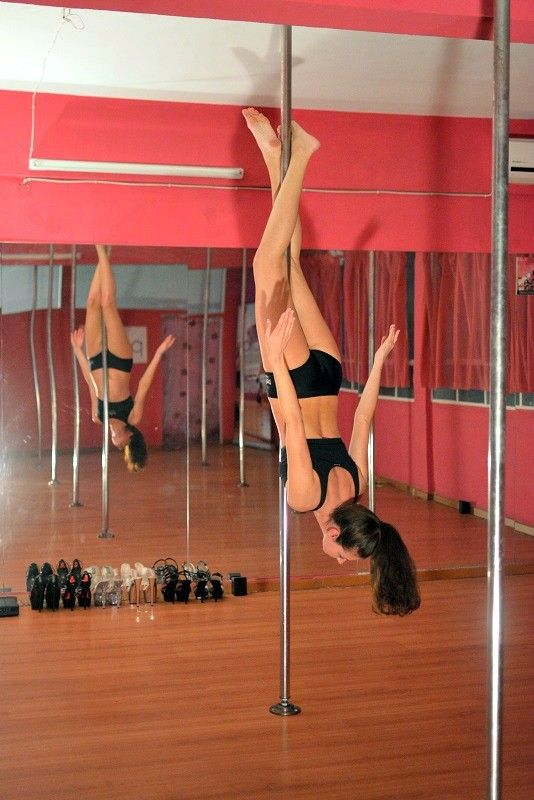
inverted crucifix
It is also very important to come down with the same control and speed, i.e. return strength to the abdominal to lower your foot and body slowly and do not leave it to fall towards the floor.
Exercises to Test Your Readiness for the Invert
To check if you can invert properly try the following exercises:
1. Make a double climb
That is when you’re already on the pole and attempt to climb higher. If you do, it means that your hands are strong enough to hold the weight of your body.
2. Stand next to the pole with the exterior hand over the interior and with the strength of your abs, lift your knees as high as you can.
If your arms stretch, it means that they don’t have enough strength to hold the weight of your body. If you can’t reach the knees near your chest, it means that your abs do not have enough strength to help you flip.
3. Do the upright Cross (crucifix)
If you manage to do the upright cross, it means that you know the correct position of the feet and you have the power to keep the weight of your body and the inverted cross.
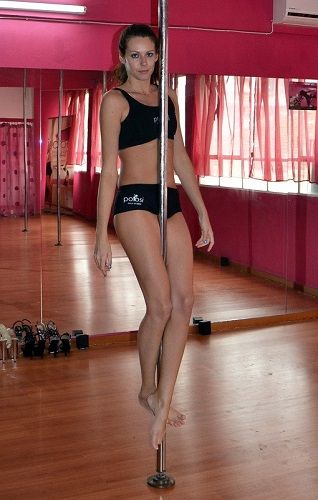
Exercises to Build Strength for the Basic Invert Pole Move
A few more techniques I use in my classes to help you perfect your invert
Do many strengthening training with the pole.
You can stand next to the pillar with the exterior hand over the interior and with the strength of the abs lift your knees as high as you can. If you reach the knees to the chest you can try to lean the pelvis and the head back and stay in this position for a while.
Try it out on the floor
Lie down on the floor next to the pole and put the outside hand to catch the pole over the Interior and try, with one move, to lift the pelvis from the floor and place your foot in the right places of the pole. This will help you to be more familiar with the position of the legs at the time you invert and so you will be in the correct position much faster without losing your strength!
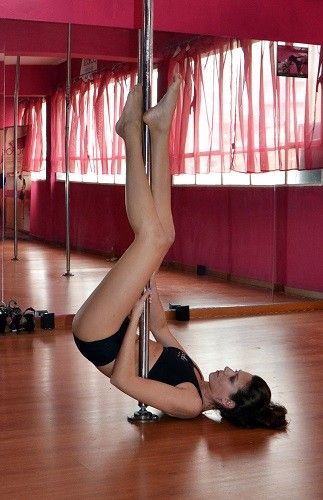
Don’t forget the head
Our head has enough weight and usually, we tend to look at our feet when we try to invert. Instead, try to look at the ceiling or even better behind. This way, it will be easier to lift up the legs and pelvis.
Keep checking
When you try to invert try to come down with the same control and speed, i.e. placing power in the abs of the lower body and legs slowly and do not let them just fall to the floor. So exercise these points and it will get easier and easier to flip.
Hot Tip: Keeping Your Legs Straight
Remember to keep your legs straight just when you lift your pelvis up so you don’t catch your hands between your legs!
Advanced Variations of the Basic Invert Pole Move
Hot Tip: Keeping Your Legs Straight for a Clean Invert
When lifting your pelvis up, ensure your legs remain straight. This prevents your hands from getting trapped between your legs and allows for a clean, professional-looking invert.
Variant: Inverted Crucifix Transition
Once comfortable with the basic invert pole, try transitioning into an inverted crucifix:
- Drop your interior hand and press your armpit against the pole for support.
- Once balanced, let go with your exterior hand while maintaining body tension.
- Slowly turn your body to face the pole and enter the inverted crucifix position.
This variation helps build confidence and prepares you for more advanced inversions.
Learn the Basic Invert Pole with Online Classes
Ready to master the basic invert pole move? Join Open Dance Academy’s online classes, where expert instructors break down pole fitness techniques step by step.
Use the discount code ‘verticalwise’ at checkout for 10% off your enrollment!
Conclusion: Mastering the Basic Invert Pole Move
Perfecting the basic invert pole requires patience, strength, and proper technique. By focusing on core engagement, controlled movements, and strength training, you can perform this essential move safely and confidently.
Remember to always:
- Prioritize form over momentum.
- Strengthen your grip, abs, and back muscles for better control.
- Seek guidance from experienced instructors for proper technique.
With consistent practice, you’ll master the basic invert pole move and unlock a new level of pole dancing skills.
The content of this article is informative. Never try new exercises without the presence of an experienced instructor.

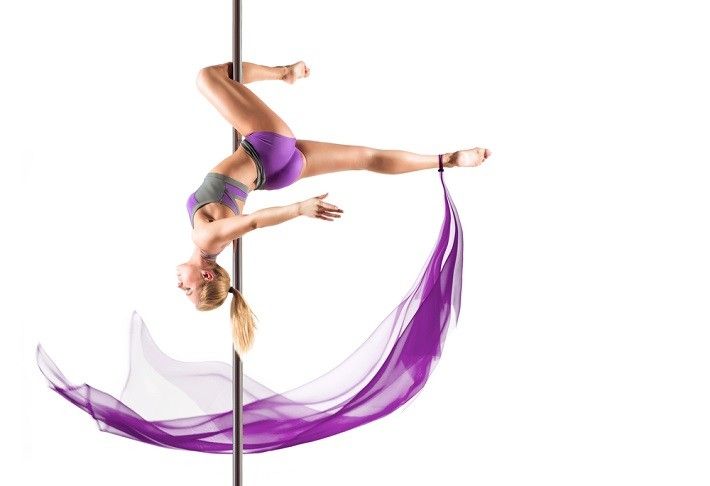

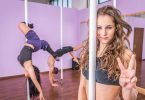




Thanks for all the information. It was very helpful. Some other thoughts…
For most traveling moves you would have the heels up slightly so you have “bounce” in your step. Dancers vary in how high they like their heels for this. I was always being told only 1/4 inch of the floor by one teacher but that is wrong, it should be where you are comfortable. Some traveling moves you need to come right up on the balls of your feet as high as possible. If you are standing still learning moves, you may be told to keep your heels down and learn to move from your hip and belly muscles rather than shifting your hip around using your feet and legs. It’s a good discipline for beginners and drilling.
Thank you for your valuable input and additional thoughts on traveling moves in pole dancing! We appreciate your insights and the reminder that dancers may vary in their preferences for heel height and comfort. It’s important to find the right balance and technique that works best for each individual dancer.